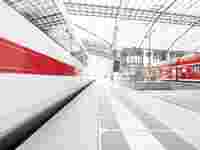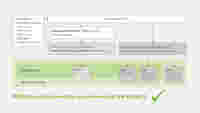The Railway Standards
Questions about railway suitability refer to compliance with DIN EN 50155. Although EN 50155 does have an international counterpart (IEC 60751), EN 50155 is the current railway standard recognized around the world.


Trains are the safest mode of transportation. This is ensured not only by the operator, but also by the vehicle and component manufacturers. Whatever the reason for a fire – the passengers must be protected as much as possible.
Fire Protection
Fire Protection per EN 45545
The passengers must be able to escape danger. This is assured by operating characteristics and vehicle construction. Trains are designed and constructed so they can still be driven for a specific time in case of fire, capable of continuing out of a tunnel or across a bridge. Corresponding escape routes must be in place and usable.
Above all, fire must be kept from starting at all costs. If a fire does occur, both flame and the resultant smoke must be kept from spreading. If fumes develop, these must not have any detrimental effects to occupants, nor may smoke density hinder orientation to escape routes.
For these reasons, painstaking attention is given to the use of high-quality materials that meet the above requirements from the earliest stages of conception and development.
So these required material properties could be recognized and compared, the decades-old national European standards (DIN 5510-2, NF F 16-101/-102, BS6853, and others) were harmonized and adopted in European standard EN 45545. EN 45545 took legal force March 2013, and must be applied!

WAGO products meet the requirements of EN 45545-2.
Parts 1 and 2 are relevant for WAGO components.
Part 1 is the generally descriptive section that, among other things, defines and describes the following key data:
Part 2 is the section relevant to materials. The first steps in material selection or consideration include the search for the products listed in Table 2 of EN 45545-2:
Clear, fixed requirements are defined for all listed products.
WAGO articles are listed in Table 2, “Requirements for Listed Components,” in Section 4.4 of EN 45545-2 and are grouped under EL10 as “small electrical parts.”
According to this grouping, small electrical parts must meet R26 requirements.
The R26 requirement is defined in Table 5, “Material Requirements” (Section 4.8), and stipulates V0 material for small electrical parts (EL10) in all three hazard levels (HL1-3). Therefore, the requirement for V0 material applies to WAGO articles.
WAGO uses the special polyamide 6.6, ranked as V0 in under UL94, as carrier and insulating material of current-carrying electromechanical parts (e.g., rail-mount terminal blocks, pluggable connectors and PCB terminal blocks).
Products not listed in Table 2 must be grouped according to the decision criteria flow chart and the grouping rules defined therein while satisfying different criteria (R22 – R23 – R24) based on weight (combustible mass) and operation area (indoor/outdoor).
The polyamide PA6.6 V0 we use also fulfills the most stringent requirements for the highest hazard level, HL3, with no restrictions, in accordance with the current fire regulations for rolling stock defined in EN 45545. Furthermore, we can also satisfy even stricter requirements, because the properties of our polyamide PA6.6 maintain the requirements according to R22 – R24 to HL3, that is, for all vehicle categories and all construction type classes:
In addition to the European EN 45545, the following American standards applicable in the respective regions have also been accounted for:
The PA6.6 V0 used by WAGO also fulfills these American norms!
Recommended Reading
More Railway System Solutions
Questions about railway suitability refer to compliance with DIN EN 50155. Although EN 50155 does have an international counterpart (IEC 60751), EN 50155 is the current railway standard recognized around the world.
